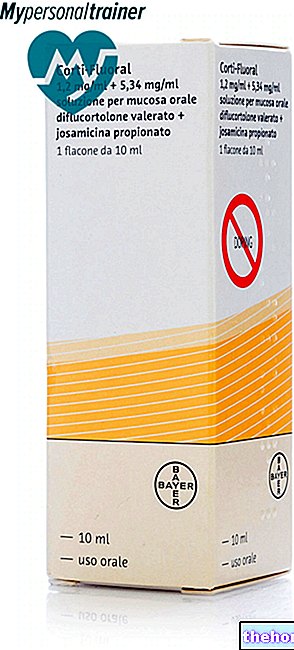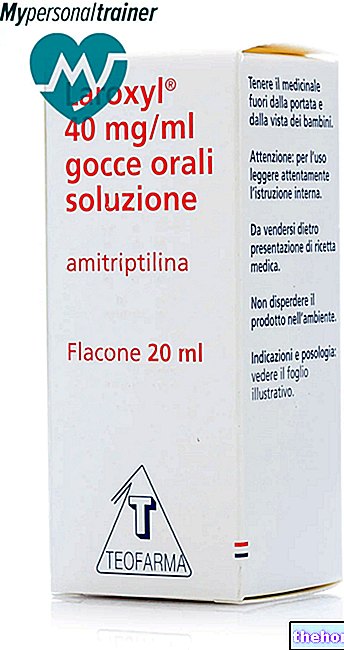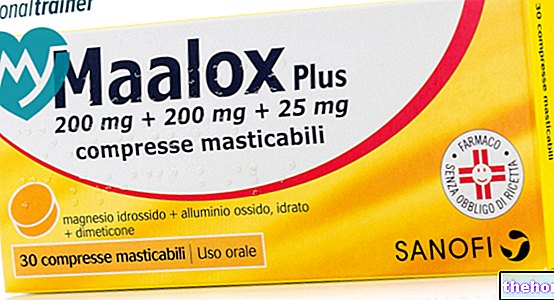Active ingredients: Mepivacaine (Mepivacaine hydrochloride)
CARBOCAINE 10 mg / ml solution for injection
CARBOCAINE 20 mg / ml solution for injection
Source Package Leaflet: AIFA (Italian Medicines Agency). Content published in January 2016. The information present may not be up-to-date.
To have access to the most up-to-date version, it is advisable to access the AIFA (Italian Medicines Agency) website. Disclaimer and useful information.
01.0 NAME OF THE MEDICINAL PRODUCT
CARBOCAINE
02.0 QUALITATIVE AND QUANTITATIVE COMPOSITION
CARBOCAINE 10 mg / ml solution for injection
1 ml contains:
active ingredient: mepivacaine hydrochloride 10 mg
CARBOCAINE 20 mg / ml solution for injection
1 ml contains:
active ingredient: mepivacaine hydrochloride 20 mg
For the full list of excipients, see section 6.1.
03.0 PHARMACEUTICAL FORM
Injectable solution.
04.0 CLINICAL INFORMATION
04.1 Therapeutic indications
Carbocaine is indicated in all interventions concerning:
- general surgery (minor surgery)
- Obstetrics and Gynecology
- urology
- ophthalmology (retro-bulbar block, etc.)
- dermatology (removal of warts, cysts, dermoids, etc.)
- otolaryngology (tonsillectomy, rhinoplasty, interventions on the middle ear, etc.)
- orthopedics (reduction of fractures and dislocations, etc.)
- general medicine (accidents, neuralgia, etc.)
- sports medicine (muscle strains, meniscopathies, etc.).
04.2 Posology and method of administration
The maximum dose in a healthy adult (not pre-treated with sedatives) in single administration or in several repeated administrations in less than 90 minutes is 7 mg / kg without ever exceeding 550 mg. The total dose in 24 hours must never exceed 1000 mg; in pediatrics do not exceed 5-6 mg / kg.
When prolonged blockade is used, for example through repeated administration, the risk of reaching toxic plasma concentrations and induction of local neural lesions should be considered.
In order to avoid intravascular administration it is necessary to aspirate repeatedly before and during the administration of the main dose which should be injected slowly or in increasing doses, carefully observing the patient's vital functions and maintaining verbal contact.
Accidental intravascular administration can be recognized by a temporary increase in heart rate, while accidental intrathecal administration can be recognized by signs of spinal block.
If signs of toxicity occur, the injection should be stopped immediately.
Recommended doses:
Surgery
Peridural and caudal block: up to 400 mg reached with 15-30 ml of a 1% solution or with 10-20 ml of a 2% solution.
Paravertebral block: up to 400 mg with 1% solution for the stellate ganglion block and for vegetative blocks, at 1-2% for the paravertebral block of the somatic nerves.
Peripheral cervical, brachial, intercostal, paracervical, pubendal and nerve endings nerve block: up to 400 mg achievable with 5-20 ml of 1% or 2% solution depending on the area and extent of the block.
Infiltration: up to 400 mg in relation to the area of the intervention, obtainable with variable volumes up to 40 ml of a 0.5-1% solution.
Obstetrics
Paracervical block: up to 200 mg within a 90 minute period obtainable with 10 ml of a 1% solution on each side.
Babies
Due to impaired hepatic metabolism, mepivacaine should not be used in neonates.
Special populations
Hepatic impairment
No dose reduction is required under surgical anesthesia in patients with hepatic impairment. When prolonged blocks are used, for example by administering repeated doses of mepivacaine, repeated doses of mepivacaine should be reduced by 50% in patients with "Child-Pugh" grade C liver disease and a total dose of 750 mg 24-hour mepivacaine should not be exceeded (see section 4.4).
Renal impairment
No dose reduction is required under surgical anesthesia up to 24 hours in patients with renal dysfunction (see sections 4.4 and 5.2).
Warning: the vials do not contain paraseptic excipients should be used for a single administration. Any inventories will be discarded.
04.3 Contraindications
Hypersensitivity to the active substance, to other local anesthetics of the amide type, to other closely related substances from a chemical point of view or to any of the excipients.
Known or suspected pregnancy.
04.4 Special warnings and appropriate precautions for use
The techniques of local or regional anesthesia, with the exception of those which are extremely simple, must always be carried out in adequately equipped areas and by qualified personnel. It is necessary to have immediate availability of the equipment and drugs necessary for monitoring emergency resuscitation.
In patients undergoing major block or receiving high doses of the drug, an intravenous catheter must be inserted before administering the local anesthetic. diagnosis and treatment of undesirable effects, systemic toxicity or other complications (4.9 "Overdose").
The anesthetic solution must be carefully injected in small doses approximately 10 seconds after a preventive aspiration. Especially when very vascularized areas have to be infiltrated, it is advisable to allow about two minutes to pass before proceeding to the actual locoregional block.
The product should be used with absolute caution in subjects undergoing treatment with MAOIs or tricyclic antidepressants.
Before use, the doctor must ascertain the physical state of the subjects to be treated.
Any overdose of anesthetic should be avoided and never given two maximum doses of the latter without a minimum interval of 24 hours.
However, it is necessary to use the lowest doses and concentrations that can allow to obtain the desired effect.
Some local anesthetic techniques can be associated with severe adverse reactions, regardless of the local anesthetic used, such as:
- Central nervous block: can cause cardiovascular depression especially in the presence of hypovolemia. Epidural anesthesia should be used with caution in patients with reduced cardiovascular function;
- Retrobulbar injections: they can, in very rare cases, reach the subarachnoid space of the brain causing temporary blindness, cardiovascular collapse, apnea, convulsions, etc. Such reactions must be diagnosed and treated immediately;
- Retro and peribulbar injections of local anesthetics: carry a low risk of persistent muscle dysfunction in the eye. Primary causes include trauma and / or local toxic effects on muscles and / or nerves. The severity of these tissue reactions is related to the extent of the trauma, the concentration of local anesthetic and the duration of tissue exposure to the local anesthetic. As with all local anesthetics, it is therefore necessary to use the lowest doses and concentrations. that can allow to obtain the desired effect. Vasoconstrictors can aggravate tissue reactions and should only be used if indicated.
- Accidental intra-arterial injections in the cranial and cervical region can cause severe symptoms even at low doses.
- Carbocaine is not recommended in labor and delivery as placental passage of mepivacaine is relatively high while neonatal metabolism is slow. This increases the potential toxicity to the fetus and neonate.
- Continuous intra-articular infusion is not an approved indication for Carbocaine.
However, post-marketing cases of chondrolysis in patients receiving continuous postoperative intra-articular infusion of local anesthetics have been recorded exclusively in North America. The majority of reported chondrolysis cases involved the shoulder joint. A causal link has not been established.
To reduce the risk of dangerous side effects, particular attention should be paid to:
• patients with advanced liver disease or severe renal impairment.
In patients with advanced Child-Pugh Grade C liver disease, data from lidocaine suggest that clearance may be reduced by approximately 50% (see section 4.2).
A clinically relevant decrease in mepivacaine clearance is expected only in patients with severe renal impairment (CL (cr) hemodialysis.
The reduction in clearance does not lead to toxicity caused by high plasma concentrations after administration of single doses under surgical anesthesia. In chronic renal failure, however, the clearance of the metabolite PPX excreted by the kidneys is impaired and after repeated administration it may be possible. verify accumulation (see section 4.2);
• patients with partial or complete heart block as local anesthetics can depress cardiac conduction;
• elderly patients or patients in precarious general conditions;
• Patients being treated with class III antiarrhythmic drugs (eg amiodarone) should be closely monitored and ECG monitoring should be considered as cardiac effects can be additive;
• Carbocaine solution for injection is probably porphyrinogenic and should only be prescribed in patients with acute porphyria when safer alternatives are not available. Appropriate precautions must be taken in vulnerable patients.
N.B. Patients in poor general conditions due to age or other compromising factors such as partial or complete block of cardiac conduction, advanced liver disease or severe renal impairment require special attention despite the fact that regional anesthesia is frequently the anesthetic technique of election in such patients.
Epidural anesthesia can cause hypotension and bradycardia. The risk can be reduced by prefilling the circulation with crystalloid or colloidal solutions.
Hypotension should be treated immediately with administration, possibly repeated, of a sympathomimetic such as ephedrine 5-10 mg intravenously.
04.5 Interactions with other medicinal products and other forms of interaction
Mepivacaine should be used with caution in patients being treated with other local anesthetics or substances structurally related to local amide-type anesthetics, e.g. certain antiarrhythmics such as mexiletine, as the systemic toxic effects are additive. Caution is advised in patients treated with class III antiarrhythmics (eg amiodarone) despite the absence of specific drug class interaction studies (see section 4.4).
Extreme caution should be exercised in subjects being treated with MAOIs or tricyclic antidepressants (see section 4.4).
04.6 Pregnancy and breastfeeding
Pregnancy
The product is contraindicated in cases of confirmed or presumed pregnancy.
Mepivacaine is not recommended during labor and delivery (see 4.4).
Feeding time
Like other local anesthetics, mepivacaine can be excreted in breast milk.
04.7 Effects on ability to drive and use machines
Local anesthetics, in addition to the direct anesthetic effect, can have a very mild effect on mental function and coordination, even in the absence of obvious central nervous system toxicity, and can temporarily adversely affect locomotion and the degree of alertness.
04.8 Undesirable effects
General
The adverse reaction profile of Carbocaine is comparable to that of other local anesthetics of the amide type. Adverse drug reactions are difficult to distinguish from physiological effects resulting from nerve conduction block (such as decreased blood pressure, bradycardia) and from events caused by injection directly (e.g. nerve fiber trauma) or indirectly (e.g. epidural abscess) ).
There may be toxic reactions and allergic reactions both to the anesthetic and to the vasoconstrictor. Among the former are reported phenomena of central nervous stimulation with excitement, tremors, disorientation, dizziness, mydriasis, increased metabolism and body temperature and, for very high doses , trismus and convulsions; if the medulla oblongata is involved, there is a sharing of the cardiovascular, respiratory and emetic centers with sweating, arrhythmias, hypertension, tachypnea, bronchodilation, nausea and vomiting. Peripheral effects can affect the cardiovascular system with bradycardia and vasodilation. . Allergic reactions occur mostly in hypersensitive subjects, but many cases are reported with the absence of individual hypersensitivity to the anamnesis. Local manifestations include various skin rashes, urticaria, itching; those of a general nature bronchospasm, laryngeal edema up to cardiorespiratory collapse from anaphylactic shock.
Table of adverse drug reactions
* More frequent side effects after epidural block
Acute systemic toxicity
Systemic toxic reactions primarily involve the central nervous system (CNS) and the cardiovascular system (CVS). These reactions are caused by a "high blood concentration of local anesthetic which may be caused by an" accidental intravascular injection, overdose or exceptionally rapid absorption from a "highly vascularized area (see section 4.4). CNS reactions are similar. for all local anesthetics of the amide type, while cardiac reactions are more dependent on the drug, both in quantitative and qualitative terms.
Central nervous system toxicity often occurs gradually, with symptoms and signs of increasing severity. The first symptoms are usually light-headedness, paraesthesia in the circumoral region, numbness of the tongue, tinnitus and visual disturbances. Dysarthria, twitching and muscle tremors are more serious manifestations and precede the onset of generalized convulsions. These signs should not be confused with eretic behaviors.
Unconsciousness and grand mal seizures may follow which can last from a few seconds to several minutes. After convulsions, hypoxia and hypercapnia occur rapidly due to increased muscle activity, interference with normal breathing and lack of airway patency. In severe cases, apnea may occur. Acidosis, hyperkalemia, hypocalcemia and hypoxia increase and extend the toxic effects of local anesthetics.
The patient's return to initial clinical condition results from the redistribution of the local anesthetic from the central nervous system and subsequent metabolism and excretion. Recovery can be rapid if large quantities of the drug have not been administered.
In severe cases, cardiovascular effects may occur which are generally preceded by signs of central nervous system toxicity.
In patients undergoing general anesthesia or deeply sedated, prodromal central nervous system symptoms may be absent. As a result of high systemic concentrations of local anesthetics, hypotension, bradycardia, arrhythmias and even cardiac arrest can be generated. Cardiac arrest, in rare cases, occurred without the appearance of prodromal effects of the central nervous system.
Treatment of acute systemic toxicity
Administration of the local anesthetic should be discontinued immediately if signs of acute systemic toxicity appear and CNS symptoms (convulsions, CNS depression) should be rapidly treated with appropriate ventilation / respiratory aids and administration of anticolvulsants.
Should circulatory arrest occur, cardiopulmonary resuscitation should be performed immediately. It is vital to ensure optimal oxygenation, ventilation, support circulation and treat acidosis.
In case of cardiovascular depression (hypotension, bradycardia), treatment with intravenous fluids, vasoconstrictors, chronotropic and or inotropic agents should be considered. The doses given to children should take into account age and weight.
Oxygen should be administered and, if necessary, assisted ventilation (mask and Ambu bag or tracheal intubation) should be performed. If seizures do not spontaneously cease after 15-20 seconds, an intravenous anticonvulsant should be administered to facilitate adequate ventilation and oxygenation, eg, intravenous sodium thiopental 1-3 mg / kg. Alternatively, diazepam 0.1 mg / kg body weight can be administered intravenously even if its action is slow. Prolonged seizures can impair the patient's ventilation and oxygenation. In this event, the administration of a muscle relaxant (such as succinylcholine 1 mg / kg body weight) facilitates ventilation and oxygen control. In such situations, endotracheal intubation should be considered immediately. In case of evident cardiovascular depression (hypotension, bradycardia), a sympathomimetic can be administered, for example, ephedrine 5-10 mg. The administration can be repeated, if necessary, after 2 -3 minutes.
The use of bulbar analeptics should be avoided in order not to aggravate the situation by increasing the consumption of oxygen. Possible convulsions can be controlled with the use of diazepam in a dose of 10-20 mg intravenously; barbiturates, which can accentuate bulbar depression, are not recommended. The circulation can be supported by administering corticoids in appropriate intravenous doses; dilute solutions of alpha-beta-stimulants with vasoconstrictive action (mefentermin, metaraminol and others) or of atropine sulphate can be added.
Sodium bicarbonate in a targeted concentration, intravenously, can be used as an antacid.
Reporting of suspected adverse reactions
Reporting of suspected adverse reactions that occur after authorization of the medicine is important as it allows for continuous monitoring of the benefit / risk balance of the medicine. Healthcare professionals are asked to report any suspected adverse reactions via the national reporting system. website www.agenziafarmaco.gov.it/it/responsabili.
04.9 Overdose
Accidental intravascular injection of local anesthetics can cause immediate systemic toxic reactions (ranging from seconds to minutes). In case of overdose, systemic toxicity occurs later (15-60 minutes after injection) and this is due to a slowed increase in blood concentrations of local anesthetic (see section 4.8).
05.0 PHARMACOLOGICAL PROPERTIES
05.1 Pharmacodynamic properties
Pharmacotherapeutic group: local anesthetics - starches.
ATC code: N01BB03.
Mepivacaine hydrochloride (Carbocaine) is a fast-acting, medium-lasting local anesthetic of the amide type. Its potency is similar to that of lidocaine. The 2% solution, for epidural administration, has a duration of action of 1.5-2 hours and up to 5 hours with peripheral nerve blocks. The 1% solution has a lower effect on motor nerve fibers and a longer duration of shorter action. The onset of activity and duration of the local anesthetic effect of mepivacaine depend on the dose and site of administration.
Like other local anesthetics, mepivacaine reversibly blocks nerve conduction and prevents sodium ions from entering through the nerve fiber cell membrane. The sodium channel of the nerve fiber membrane is considered the receptor on which local anesthetics act.
Local anesthetics can have similar effects on other excitable membranes such as the brain and myocardium. If excessive amounts of the drug reach the systemic circulation, symptoms and signs of toxicity may occur, mainly affecting the central nervous and cardiovascular systems.
Central nervous system toxicity occurs at lower plasma concentrations and generally precedes cardiovascular effects (see section 4.8). Direct effects of local anesthetics on the myocardium include slow conduction, negative inotropism up to cadiac arrest.
Indirect cardiovascular effects (hypotension, bradycardia) may occur after epidural administration and are related to the extension of the concomitant sympathetic block.
05.2 Pharmacokinetic properties
Mepivacaine has a pKa of 7.8 and an oil / water partition coefficient of 0.8.
The blood peak of carbocaine depends on the dose, the route of administration and the vascularity of the injection site. The volume of distribution at steady state is 84 liters. Mepivacaine is 78% bound to plasma proteins and mainly to alpha-1-acid glycoprotein.
The clearance of mepivacaine occurs via metabolic processes predominantly in the liver and depends on the liver blood flow and the activity of metabolising enzymes. The total clearance of mepivacaine is 0.8 liters / minute, the terminal half-life is 1.9. hours and the hepatic extraction ratio of 0.5.
The terminal half-life in the neonate is 3 times higher than in the adult.
Mepivacaine crosses the placental barrier and equilibrium between bound and free fractions is readily achieved. The degree of plasma protein binding in the fetus is less than that seen in the mother, resulting in a lower total plasma concentration in the fetus.
The available information on the excretion of mepivacaine in breast milk is not sufficient to determine the risk to the suckling child.
Only 4% of mepivacaine is excreted unchanged in the urine. The drug is degraded by hydroxylation and conjugation. Approximately 50% passes into the bile in the form of metabolites and is excreted in the urine, while only a small amount is found in the faeces. The main metabolites are the 3-OH derivative (16%), the 4-OH derivative (12%) and the N-demethylated derivative PPX (2.5%).
Renal impairment
Impaired renal function has little or no influence on the tolerability of mepivacaine when used short-term in surgical anesthesia.
Plasma mepivacaine concentrations were evaluated after axillary block with mepivacaine without adrenaline (600 mg for axillary block and 50 mg for supplementation) in 8 patients with end-stage chronic renal failure.
Total plasma concentrations expressed in mcg / mL as medians and their ranges were 1.69 (1.23-7.78) at 5 minutes, 5.61 (4.36-8.19) at 30 minutes, 8.28 (3.83-11.21) at 60 minutes, 7.93 (5.63-11.1) at 90 minutes and 6.49 (5.56-8.35) at 150 minutes. No toxicity symptoms were observed. In comparison, patients without renal insufficiency who received 600 mg of mepivacaine for axillary plexus block had mean total plasma concentrations of 3.33 mcg / mL with a single peak of 5.21 microg / mL.
Patients with chronic renal failure have increased concentrations of AAG and therefore increased plasma protein binding and increased total concentrations while the concentration of free, pharmacologically active mepicavaine may not be increased to levels where toxicity occurs.
Renal clearance of the metabolite PPX is significantly correlated with creatinine clearance. A lack of correlation between total exposure, expressed as AUC, with creatinine clearance indicates that total PPX clearance includes non-renal elimination in addition to renal excretion. Some patients with impaired renal function may show increased exposure to PPX due to reduced non-renal clearance. Due to the reduced CNS toxicity of PPX compared to mepivacaine the clinical consequences are considered negligible in short term treatment.
05.3 Preclinical safety data
In animal studies, the signs and symptoms of toxicity observed after high doses of mepivacaine are a result of the effect on the central nervous and cardiovascular systems. No drug-related adverse effects were observed in reproductive toxicity studies. The mutagenic potential of mepivacaine has not been studied. Considering the area and duration of therapeutic use of the drug, carcinogenicity studies with mepivacaine have not been conducted.
06.0 PHARMACEUTICAL INFORMATION
06.1 Excipients
Carbocaine 10 mg / ml solution for injection in glass ampoule
sodium chloride (tonic agent),
water for injections.
Carbocaine 20 mg / ml solution for injection in polyethylene ampoule
sodium chloride (tonic agent),
sodium hydroxide (pH regulator),
hydrochloric acid (pH regulator),
water for injections.
06.2 Incompatibility
The solubility of mepivacaine above pH 6.5 is limited. This should be taken into consideration when alkaline solutions such as carbonates are added, which can precipitate the solution.
06.3 Period of validity
Carbocaine 10 mg / ml solution for injection in glass ampoule
The validity of the intact packaged product in all its presentations is 3 years.
Carbocaine 20 mg / ml solution for injection in polyethylene ampoule
The validity of the intact packaged product in all its presentations is 2 years.
06.4 Special precautions for storage
Carbocaine 10 mg / ml and 20 mg / ml solution for injection
Do not store above 25 ° C.
The solutions do not contain preservatives and must be used immediately after opening the vial. Any residual drug must be discarded.
Re-sterilization of Carbocaine is not recommended.
06.5 Nature of the immediate packaging and contents of the package
Not all pack sizes may be marketed.
Carbocaine 10 mg / ml solution for injection
5 and 10 ml neutral glass vials
5 ampoules of 5 ml - 5 ampoules of 10 ml.
Carbocaine 20 mg / ml solution for injection
5ml polyethylene vials
10 vials of 5 ml.
06.6 Instructions for use and handling
No special instructions.
07.0 MARKETING AUTHORIZATION HOLDER
Aspen Pharma Trading Limited
3016 Citywest Business Campus
Dublin24
Ireland
08.0 MARKETING AUTHORIZATION NUMBER
Carbocaine 10 mg / ml solution for injection
- 5 vials 5 ml - AIC 016691558
- 5 vials 10 ml - AIC 016691560
Carbocaine 20 mg / ml solution for injection
- 10 vials 5 ml - AIC 016691634
09.0 DATE OF FIRST AUTHORIZATION OR RENEWAL OF THE AUTHORIZATION
13.04.1961 / June 2005
Carbocaine 10 mg / ml solution for injection
- 5 vials 5 ml: 30.10.2003 / June 2005
- 5 ampoules 10 ml: 30.10.2003 / June 2005
Carbocaine 20 mg / ml solution for injection
- 10 ampoules 5 ml: 26.07.2016
10.0 DATE OF REVISION OF THE TEXT
AIFA determination of 25 March 2017




























